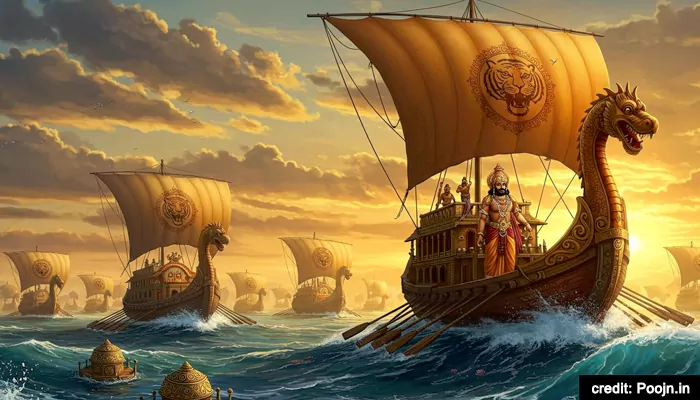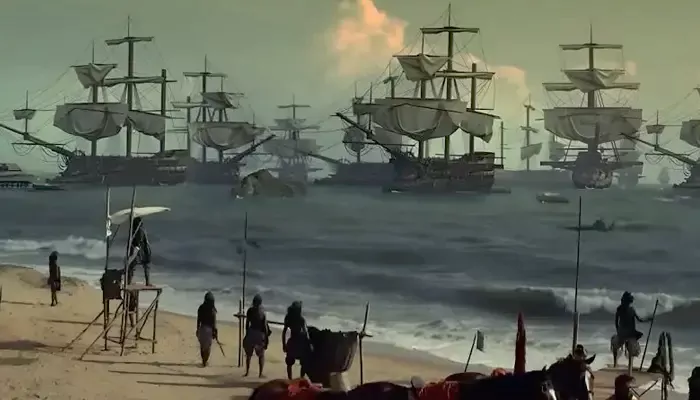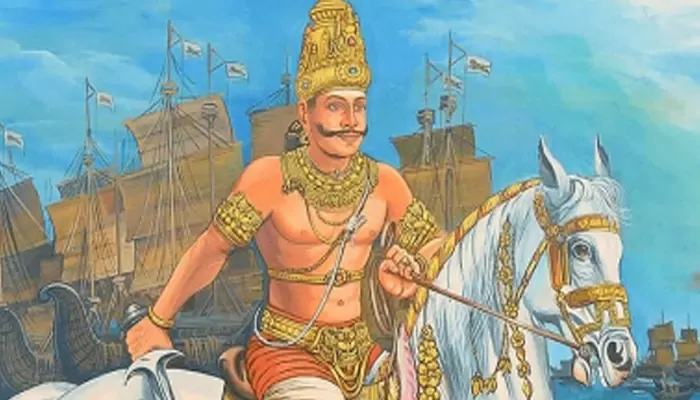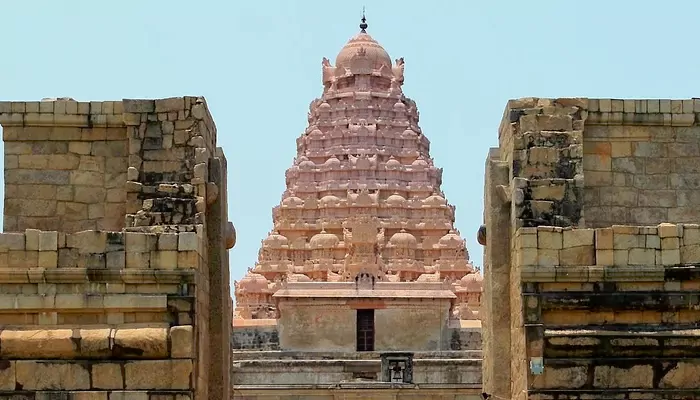
Through ships, shrines, and soft power, South India’s Chola dynasty reshaped Southeast Asia—centuries before Europe set sail
Indian history is often viewed through the lens of loss—battles lost, empires subdued, civilisations overrun. But that's only part of the story. The Cholas of South India, under the bold leadership of Rajendra Chola I, redefined that narrative not with ink, but with oars.
In 1025 CE, Tamil ships traversed the Indian Ocean in one of the most daring and successful naval expeditions in pre-modern history. Their target: Srivijaya, the great maritime empire of Southeast Asia. Their goal: dominance over trade, culture, and the seas themselves.
What transpired was not merely a campaign—it was a civilisational surge.

Credit: aryavarthnews
Rajendra Chola I inherited more than just a powerful empire from his father, Rajaraja Chola I. He inherited a vision—one that saw the ocean not as a boundary but as a gateway. Having already subdued Sri Lanka and the Deccan plateau, Rajendra turned eastward. His fleet didn't follow the usual route through the Strait of Malacca. Instead, the Chola navy landed at Barus on Sumatra's west coast—a Tamil-controlled port—and moved south along an unsuspecting flank.
The move was pure military brilliance. Srivijaya, expecting an attack via Malacca, had left its western ports exposed. By the time they responded, it was too late.

Credit: Medium
The crown jewel of Srivijaya, Palembang, fell rapidly. Tamil forces stormed the Kadatuan palace and captured King Sangrama Vijayatungavarman himself. Among the spoils was the legendary Vidhyadhara Torana, a gem-encrusted war gate said to dazzle visitors with its beauty.
But the conquest did not end there. Rajendra's navy, riding the monsoon winds like seasoned mariners, launched successive strikes on key ports: Pannai in Sumatra, Malaiyur in Malaya, Mapappalam in Burma, Talaittakkolam in Thailand, and Nakkavaram in the Nicobar Islands. In Kedah, Tamil swords sealed the Cholas' eastern dominance.
Unlike colonial empires, the Cholas did not aim to govern every inch of territory they touched. Their influence was more subtle and enduring. By overthrowing Srivijaya's control over maritime trade, they paved the way for Tamil merchant guilds—such as the Ayyavole 500 and Manigramam—to flourish. These guilds not only managed commerce but also spread religion, language, and architecture across the seas.
Dravidian temples emerged in Southeast Asia, with vimanas resembling the silhouettes of Gangaikonda Cholapuram and Thanjavur. Shaivism and Vaishnavism took root, often blending with local beliefs. Tamil and Sanskrit inscriptions began to appear from Sumatra to Cambodia—serving as written proof of a civilisational handshake.

Credit: Swarajya
Rajendra Chola's victory marked the end of Srivijaya's dominance, ushering in an era of smaller regional powers and strengthened Indo-Southeast Asian ties. Although the Cholas did not stay to govern, they achieved something greater: influence without occupation.
Later, Srivijaya shifted from a rival to an ally, even seeking Chola's help to quell internal unrest. Tamil merchants gained prominence in the regional economy, and Indian temple-building styles thrived in Southeast Asia.
The legacy of the Chola Empire endured in Gangaikonda Cholapuram, where Rajendra established a city that reflected his global ambitions. The impressive Brihadeshwara Temple, which he had built there—now a UNESCO World Heritage Site—was more than a shrine; it was a declaration: India had looked eastward and triumphed.